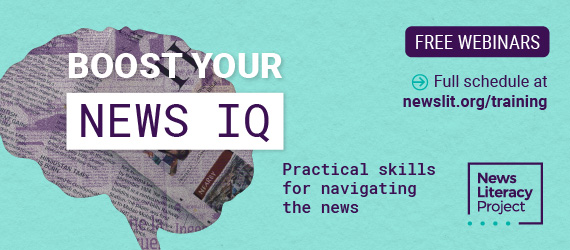NLP helps you keep your holiday conversations civil
One of the traditions at NLP is helping people thoughtfully navigate the holidays by ensuring misinformation and conspiracy theories do not derail conversations or damage relationships. Below is an updated version of a post we’ve shared before, just in time for the holidays:
It’s certainly frustrating and discouraging when misinformation makes its way into a friendly conversation. But when it shows up on the menu for your holiday gathering, misinformation can spoil your appetite as well as your relationships with loved ones.
This holiday season, amid polarizing world events, conditions lend themselves to combative conversations and fractured friendships. But it doesn’t have to be that way. Just like you’d prep the side dishes before guests arrive, you can get ready for engaging in civil and meaningful discourse — even with the family’s diehard conspiracy theorist — using the tips and tools NLP provides.
While every scenario is different, following some general best practices can help keep the conversation civil and make the interaction worthwhile. To begin, use the six tips outlined in our downloadable infographic How to speak up without starting a showdown as a guide. (Click here to download the PDF.) You can also share this fun video with your wider circle on social media:
@newslitproject Don’t let misinformation dominate the dinner table this holiday season. Here are a few tips for having productive conversations #Thanksgiving #Misinformation #NewsLiteracy ♬ original sound – News Literacy Project
Further boost your confidence for entering what are likely difficult discussions with four key strategies with four timeless tips from Get Smart About News, our free weekly newsletter for non-educators, which we also feature on our website. (Subscribe here so you can stay on top of trending news literacy topics and resources.)
Happy holidays!
NEA Today lists News Literacy Project resources among tools to fight misinformation
NEA Today, a publication of the National Education Association labor union, notes that only a few states mandate that media literacy be taught in schools – even as young people increasingly struggle to make sense of an online onslaught of facts, opinions, rumors and news. But critical thinking skills can still be built into learning with tools like the News Literacy Project’s RumorGuard, the organization’s Misinformation Dashboard: Election 2024 and Newsroom to Classroom journalist visits.
“Students are growing up in an ‘infodemic’ where they are presented with copious amounts of information,” said Brittney Smith, a Senior Manager of District Partnerships for NLP.
Read the NEA Today story here.
Top takeaways: 3 tips for teaching news literacy in the age of AI
No longer is artificial intelligence a figment of the imagination. This technology has quickly seeped into everyday life, forcing industries from medicine to education to grapple with its implications. Although AI has the potential to increase efficiency and streamline workflows, it also leads to the proliferation of misinformation in digital spaces. Educators play a vital role in training students to use this new technology thoughtfully, recognize inaccurate and biased information, and make a habit of double-checking before believing.
This fall, EdWeek hosted a forum of experts to explore issues and strategies in K-12 media literacy education. The News Literacy Project’s Shaelynn Farnsworth, District Fellowship Program Director, joined a panel to offer strategies for educators working to build critical thinking skills in their classrooms. Here are three tips to take from the conversation.
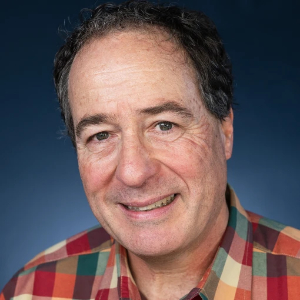
“One option that educators simply cannot take is to stick their heads in the sand.” — Kevin Bushweller, Deputy Managing Editor, Education Week
🧶 Weave it in
Critical news literacy skills can be integrated into existing curriculum across subject areas. Don’t be discouraged if your district isn’t yet able to offer a designated media or news literacy course, said Katie Gallagher, a K-12 Technology Integration Specialist in rural Colorado. Weave these skills into your existing classes with support from news literacy standards, like NLP’s Framework for Teaching News Literacy. Include hands-on opportunities for students to engage with technology and AI tools in projects that you already assign, said Cathy Collins, a Library Media Specialist in Massachusetts. For example, science teachers can build examples of misinformation into existing lessons to help students develop key news literacy competencies, like evaluating evidence.
“Start in a place where you can integrate it and embed it into what you already do.” — Katie Gallagher
🫱🏾🫲🏽 Collaborate with colleagues
Training news-literate students requires fostering a news-literate faculty. Engage in professional development days where educators share strategies for helping students navigate today’s technology and information landscape. When teachers better understand the role and impact of AI, their knowledge will ripple down to students, Collins said. When time is tight, consider embedding bite-sized learning opportunities in existing staff meetings or newsletters, added Gallagher.
“Look to teachers that are the trailblazers in your district.” — Cathy Collins
🌱 Set the foundation early
It’s not too soon to start your students down the path of news literacy. Students are gaining access to technology early, meaning that even elementary students need the skills to engage responsibly. About half of U.S. children get their first smartphone by age 11, according to Common Sense Media. Although social media and AI tools often have age restrictions, some young learners still find ways to access these platforms. Building foundational critical thinking skills from an early age will ensure that students are ready to use them responsibly. Focus on honing your students’ conceptual critical thinking skills, said Shaelynn Farnsworth. Help them understand how to seek credible information and gather facts before making a decision.
“Our young learners can start building up those critical thinking skills.” — Shaelynn Farnsworth

🔥 Hot tip: Check out “Introduction to Algorithms”
Looking for an easy point of entry for students to start thinking about AI and responsible online habits? With new content for the 2024-25 school year, NLP’s “Introduction to Algorithms” lesson on the Checkology® virtual classroom introduces students to algorithms, search engines and AI tools while prompting them to weigh the civic and social impact of these technologies. And, it’s free!
Need an option for younger students? Try “For Elementary: Search and Suggest Algorithms.”
Track the trends: Get to know the election dashboard
Welcome to our blog series focused on the Misinformation Dashboard: Election 2024, a tool for exploring trends and analysis related to falsehoods regarding the candidates and voting process.
Every day people are bombarded with information on social media, and in this rush of content, false claims can slip by undetected. Developing the skills to identify and address falsehoods is important for every online user, especially in the days leading up to a historic presidential election, when the volume and variety ratchet up, as well as the stakes.
That’s why NLP has launched its Misinformation Dashboard: Election 2024 – an interactive collection of viral election-related falsehoods that we began compiling in July 2023, with a post from an ordinary Instagram account. The shocking image: a screenshot of what appeared to be an endorsement of Donald Trump for president from superstar Lady Gaga.
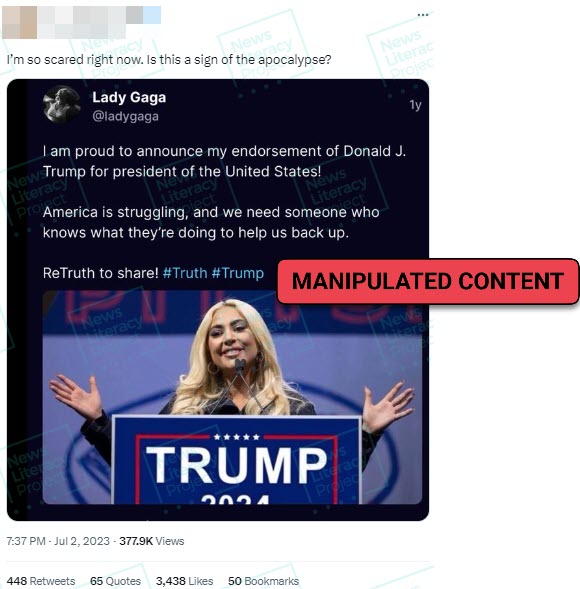
But it was not genuine. The image was created by doctoring a photograph of Gaga as she addressed a crowd in Pennsylvania during President Joe Biden’s campaign in November 2020. And the alleged quote, well, that was a complete fabrication. Since then, we’ve cataloged more than 500 other false claims aimed at influencing the electorate.
But the dashboard goes well beyond simply compiling examples of false, manipulated and AI-generated content. It identifies common tactics used to create these falsehoods, along with the recurring themes around which they cluster – an approach that we hope helps people be able to better recognize and reject these pieces of misinformation in their feeds.
The Types and Tactics of Misinformation
NLP’s Misinformation Dashboard: Election 2024 is divided into two broad sections: themes and types of misinformation.
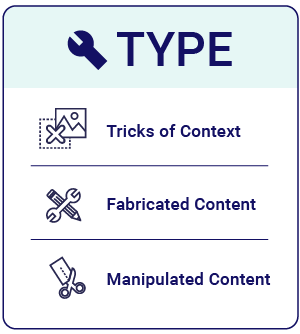
Tricks of context have proven to be the most common form of election misinformation online so far — and the most common is the use of “false context,” or presenting an image or video along with text that inaccurately describes it. This tactic is likely popular because it is both effective and easy. False context claims often follow major breaking news events when people are following trending hashtags to get the most recent information. During a natural disaster, it is practically guaranteed that engagement seekers will post years-old photographs or videos and falsely claim that they relate to current events. The same dynamic plays out in political posts. After a campaign rally, for example, it’s not uncommon for images of large, enthusiastic crowds – such as photos of concerts – to go viral as disingenuous depictions of crowd size.
Fabricated content and manipulated content are the two other misinformation types found in the dashboard. While there have been a fair number of fabricated images created with AI-generated software, these technologically advanced falsehoods are still outpaced by less sophisticated counterparts. It is far more common to encounter a sheer assertion – an evidence-free claim that is fabricated out of thin air – or a fictional quote, than an AI-generated image. Manipulating content is another common approach to creating misinformation, with doctored images of T-shirts, signs, and news chyrons among the most common items used in these digital alterations.
Visit the Misinformation Dashboard: Election 2024
You can find additional resources to help you identify falsehoods and recognize credible election information on our resource page, Election 2024: Be informed, not misled.
Related columns:
NLP expert shares strategies to spot and stop misinformation on AARP podcast In Clear Terms
We are all susceptible to misinformation, but news literacy skills can protect you from being misled. On the In Clear Terms podcast, presented by the AARP, NLP Senior Manager of Education Design Dan Evon emphasizes the importance of verifying content before sharing it.
“If we can resist engaging with this content, resist sharing this content, we can really dampen its spread. And the less it spreads, the less it fools people and the less power it has,” Evon says.
NLP’s Five Factors teaches people how to evaluate the credibility of news and information.
Listen to the full episode here.
NLP expert shares strategies to spot and stop misinformation on AARP podcast In Clear Terms
We are all susceptible to misinformation, but news literacy skills can protect you from being misled. On the In Clear Terms podcast, presented by the AARP, NLP Senior Manager of Education Design Dan Evon emphasizes the importance of verifying content before sharing it.
“If we can resist engaging with this content, resist sharing this content, we can really dampen its spread. And the less it spreads, the less it fools people and the less power it has,” Evon says.
NLP’s Five Factors teaches people how to evaluate the credibility of news and information.
Listen to the full episode here.
In The Philadelphia Inquirer, NLP explains how voters can avoid misinformation on social media
Misinformation about the upcoming presidential election is rampant on social media. In a recent Philadelphia Inquirer article, Dan Evon, Senior Manager of Education Design of NLP, highlights the challenges with finding credible information on social platforms.
“When news breaks, there’s so much more activity on social media and from accounts of people you shouldn’t trust,” Evon says. “Their goal is to create doubt and chaos, but it’s up to you to be extra careful about what you’re consuming.”
Read the full piece here.
In Education Week, NLP provides teachers with guidance for students on avoiding conspiracies
In an Education Week article, Pamela Brunskill, Senior Director of Education Design at NLP, offered advice for teachers to help their students avoid conspiracy theories that swirled after the attempted assassination of former President Donald Trump.
She explained the importance of seeking out credible news and information sources, saying: “That’s one of the biggest habits I think we need to break, allowing social media to feed you the information instead of controlling what you see.”
Read the full piece here.
Brunskill offers tips for civil conversations about misinformation on APM’s Marketplace Tech
In the “Decoding Democracy” series on American Public Media’s Marketplace Tech program, NLP’s senior manager of education design, Pamela Brunskill, discussed how to have a constructive conversation with loved ones who may be misled by misinformation.
“Ideally, you would navigate into a conversation about the ethics of reporting and standards of quality journalism,” she said.
The episode also highlights NLP’s suggestion to use PEP — patience, empathy and persistence — in these conversations.
Watch the full installment here.
Vetting election information: Tips for veterans, service members
Mis- and disinformation spread in politically charged times, particularly during election campaign season. Military service members, veterans and their families are often targeted by purveyors of disinformation seeking to undermine trust in the voting process.
To break through a confusing and misleading information landscape, the News Literacy Project hosted a panel of experts who work with the military community to discuss common types of election-related misinformation and practical tips for finding reliable news before voting. Zack Baddorf, Navy veteran, journalist and co-founder of Military Veterans in Journalism, moderated the conversation.
📣 Learn the messaging
Ahead of elections, foreign adversaries and domestic actors might aim to influence voters by emphasizing political friction and distrust in the voting process, said Richard Brookshire, CEO and co-founder of the Black Veterans Project. Propagandists seek to influence votes by exacerbating apathy or polarization. “They look at…points of conflict as cracks in the foundation,” added Joe Plenzler, a Marine Corps veteran and board member for We the Veterans and Military Families. “And they just need to pour their narrative like water into these cracks and wait for it to freeze and expand and burst.” Specifically, this might look like messages of moral or economic decline, competition and resource scarcity, Plenzler said.
“What we’re seeing is election integrity messaging and leaning into that in a way to chip away at voter confidence and to make you question whether or not it’s even worth coming out to vote.”
— Richard Brookshire
🧠 Engage with your emotions
Manipulative messages often spark a strong emotional reaction like fear or anger. To avoid being influenced by misinformation, Plenzler suggested the practice of identifying your emotions. When you feel fear, say what you’re feeling to re-engage your brain, Plenzler said. Dissect the message by asking, “To whose advantage is my fear?” he said. Where is the information coming from, and what is the information source trying to get you to do? Don’t underestimate the power of pausing to take a few deep breaths.
“The main takeaway and how you subvert that is through emotional intelligence because the opposite of fear in this situation is not courage… It’s skepticism. It’s asking very hard, pointed questions and being curious about the world.”
— Joe Plenzler
🗳️ Military votes count
Absentee ballots, when filled out correctly, are always counted in every election, regardless of how close the race is. They hold the same weight as a vote cast at a polling place, said Scott Wiedmann, director of the Federal Voting Assistance Program. If you are submitting an absentee ballot, don’t forget to sign your ballot package and send it back as early as possible. If you have questions about registering to vote absentee or finding accurate voting information, Wiedmann points to your unit’s voting assistance officer.
“Every absentee ballot that’s sent in to the election official,
that’s filled out properly and is received on time,
is counted in the election.”
— Scott Wiedmann
📰 Vet your news
If misinformation exists, when can you trust what you read? Nikki Wentling, who covers disinformation and extremism for Military Times, recommends looking for transparency behind the news organization. You should be able to find information about its ownership and funding and look for ethical guidelines published on its site. Credible news outlets also take responsibility for errors, so an outlet that publishes explanations of mistakes and corrections is a good sign, Wentling said.
“Do a quick search of who owns the publication you’re reading or the news channel you’re watching, because reputable news outlets will be transparent about who owns and funds them.”
— Nikki Wentling
For more ways to find credible election news, check out our elections resource hub.
Three practical ways to detect and debunk misinformation

To stay in the loop with Dan’s fact-checks of viral claims, join the RumorGuard for timely alerts.

“If you want to be informed, if you don’t want to be fooled by this sort of stuff, you have to be an active consumer. You can’t just take these rumors as they are.”
🐌 Slow down
Information travels quickly on the internet. If a post prompts an emotional reaction, practice patience and seek out additional sources as you look for answers. Dan suggests asking yourself, “If that image or claim is true, what else would need to be true?” For example, a fake image that appeared to show the Eiffel Tower on fire went viral earlier this year. If the Eiffel Tower were truly on fire, you would also be able to find breaking news coverage, photos and videos taken from multiple angles, statements from local officials and police reports. But none of that was true when that false image circulated in January.
“The problem is that there’s so much information that comes at us that we rely on our instincts too much, and we have to slow down to critically examine content.”
🖼️ Remove the frame
Misinformation is often designed to exploit our biases, and content on social media is often paired with a caption to prime the way we view it. Try this exercise: If you ignore the photo or video’s caption, what do you see? Try to view the content for what it is, rather than in the context set up by another user.
“When we remove the frame and just view the content as itself, we can make our own conclusions before we can be influenced by these people who are spreading falsehoods.”
🥸 Check the source
Not all internet sources are created equal. If you come across an unusual or bold claim on social media, look into the account that posted the information. Does the source post legitimate news coverage, or does it focus on satire and jokes?
“Checking the source is probably the quickest and easiest thing that we can do when scrolling on social media. Just clicking on a person’s account can give us a good idea of the type of content that they share.”
NPR April Fools’ Day story cites advice from NLP RumorGuard lead writer Dan Evon
This April Fools’ Day, NPR offered tips for people to avoid falling for online pranks, and included news literacy tips from Dan Evon, NLP’s senior manager of education design. Evon debunks viral rumors and misinformation as the lead writer for NLP’s RumorGuard platform.
“Social media is really fast, and there is so much information that comes at us at once,” Evon said. “You don’t have to go through this stuff so quickly, you can take some time — just a few extra seconds — to examine these posts.”
He also cautioned people to consider the context of claims, and to look for multiple sources to confirm whether something is true. Read the full piece here.
Don’t be blinded by solar eclipse misinformation
On April 8, millions of people across North America will don special glasses, crane their necks and gaze skyward to view a rare natural phenomenon — a total solar eclipse.
An eclipse occurs when the shadow of the moon passes between the Earth and the sun, blotting out the sunlight for several minutes and darkening the sky. The upcoming eclipse will begin on the Pacific coast of Mexico a little after 2 p.m. ET and carve a diagonal path in the sky northeast across the U.S. before slipping off the continent in Newfoundland, Canada, shortly before 4 p.m. ET. The United States won’t see another total eclipse for 20 years.
Given the rarity of the event, it’s no surprise that the eclipse is generating conspiracy theories and misinformation, which have been spreading across social media and sparking fear, confusion and anxiety. Natural phenomena are often the subject of misinformation, and conspiracy theorists mine them for hidden meanings, secret government machinations and apocalyptic omens. The TikTok video we debunked on our RumorGuard® platform and the biblical-related falsehood we unmasked on Instagram are good examples of the scare-mongering circulating about this eclipse.
When family and friends share misinformation
Purveyors of mis- and disinformation who have a stake in its spread know that this is exactly the kind of content that well-intentioned friends and family might share widely. Just ask Tony Russomanno of California, who emailed us recently to share how he responded to eclipse-related misinformation that a relative shared and her friend amplified:
“i heard on the day of the Eclipse CELL PHONES may not work well or at all. be mindful and prepared. (April 8th)”
“They say plan on having cash on hand, plenty of food & water …”
Russomanno realized the women were being misled, so he researched credible information and replied to them in a thoughtful post that read, in part:
“What both of you said is technically TRUE, but perhaps not for the reasons you may think.
“The eclipse will NOT affect cell service in any direct way. However, a story in The Herald-Times in Bloomington, Indiana, a town that will be in the path of totality, said that so many people will be visiting the area and streaming live video to their friends elsewhere that the local cell towers may not have the capacity to handle the increased usage.”
The misinformation about hoarding cash and food is similar to the hysteria before the turn of the millennium, when there were fears that the Y2K computer bug would bring down civilization. Spoiler alert: It didn’t.
‘A spark of truth’
There are several reasons for the appeal and intractability of conspiracy theories, and Russomanno shared an important insight. “Reading the story made me aware that even conspiratorial nonsense may contain a spark of truth.”
He used this realization to craft a response that prompted the women to delete their posts. “That awareness shaped my reply. By leading with an acknowledgment that the rumors, as written, were ‘technically TRUE,’ the refutation that followed may have been received in a more amenable frame of mind.”
You can avoid being tricked by scare tactics and wild conspiracies about everything from solar eclipses to U.S. elections by sharpening your news literacy skills. You will then be equipped to use that knowledge to help people in your community avoid these traps and stay well-informed, as Russomanno did. To begin, check out NLP’s free resources like RumorGuard, subscribe to our newsletters and explore our website.
If you are lucky enough to be in the path of the eclipse, remember, there’s no need to stock up on cash, candles and canned goods, but be sure to use proper eye protection before you look away from your phone and up at the sky.
AI, the Digital Landscape, and Misinformation-Busting Superpowers for Students
This free webinar for educators, presented by the News Literacy Project and hosted by edWeb, explores misinformation in today’s digital landscape, including a close look at generative AI.
Tuesday, April 16, 2024
5:00 PM ET
In today’s world, misinformation is more than an inconvenience—it’s one of the greatest threats to our democracy. Whether or not your students are voting this fall, you can help ensure that they don’t fall for rumors, falsehoods, or AI-generated deceptions by empowering them with critical news literacy skills.
Join NLP’s Peter Adams and Brittney Smith for an educator’s guide to misinformation in today’s digital landscape, including a close look at generative AI. In addition to discussing fundamental tools and tips for fact checking and misinformation busting, they will explore how AI technology continues to evolve and how it can even be used to enrich the learning experience.
Topics to be covered include:
- The state of today’s digital landscape and its implications in an election year
- Strategies for helping students determine the credibility of evidence and sources
- Best practices for teaching about misinformation and conspiratorial thinking
Attendees will leave with a roadmap for getting started with teaching about misinformation, including how to use the Misinfo 101 Checkology® course and free classroom resources.
This edWebinar will be of interest to middle and high school teachers, librarians, and school and district leaders. There will be time for questions at the end of the presentation.
Don’t miss this unique opportunity – reserve your spot today!
(Can’t make it at this time but still interested? Register anyway, and we’ll email you the recording.)
About the speakers
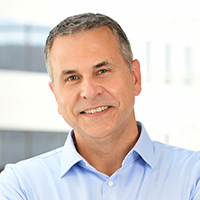
Since joining NLP in 2009, he has coordinated classroom and after-school programs, served as Chicago program manager, worked on organizational strategy, and developed NLP’s digital program. He has also provided news literacy training and workshops to educators and others throughout the area. He was promoted to his current position in January 2014 and oversees NLP’s education team, which develops resources and training for teachers. He and the other team members are based in Chicago. Peter is a graduate of Indiana University, where he majored in English and African American studies and co-founded an independent monthly student newspaper. He has a master’s degree in the humanities from the University of Chicago.

She holds a bachelor’s degree in biological science from the University of Cincinnati and a master’s degree in teaching science to adolescents and young adults from Mount St. Joseph University. She is currently pursuing her doctorate in educational practice and innovation with a STEM focus at the University of South Carolina.
Veiga discusses NLP’s efforts to help voters spot AI and deepfakes
During this year’s election season, it’s important to be prepared to encounter AI-generated misinformation, Christina Veiga, NLP’s senior director of media relations, said in a recent interview with BronxNet.
Veiga discussed signs that indicate content is generated by AI or that videos are digitally altered “deepfakes,” how these technologies can impact young people and NLP’s efforts to help voters make informed decisions.
“The rise of AI… really just makes it more important than ever for people to be news-literate, which means that they can identify credible sources, they know where to turn for information and they know how to spot the signs of mis- and disinformation,” Veiga said.
Watch the full interview here.
To learn more about how to navigate evolving AI tools, browse our free resource page.
Otoo: Young people urgently need media literacy skills
Young people are glued to screens, putting them at risk of exposure to toxic misinformation, Ebonee Otoo, senior vice president of educator engagement, wrote in an op-ed for The Hechinger Report. More states must respond by requiring that media literacy skills be taught in classrooms.
“We need to do away with the myth of the ‘digital native,’” Otoo wrote. “Just because young people have grown up with technology does not mean that they instinctively know how to navigate the challenges of our information landscape.”
As misinformation surges amid federal, state and local elections this year, states must prepare students to be fully informed participants in our democracy, Otoo said. She called students “our next generation of voters.”
“It’s important that we teach young people how to recognize the different types and quality of information they’re bombarded with, or we will leave them vulnerable to information that is unreliable or even intentionally misleading,” Otoo wrote.
Read Otoo’s full piece here.
Infórmate en 2024
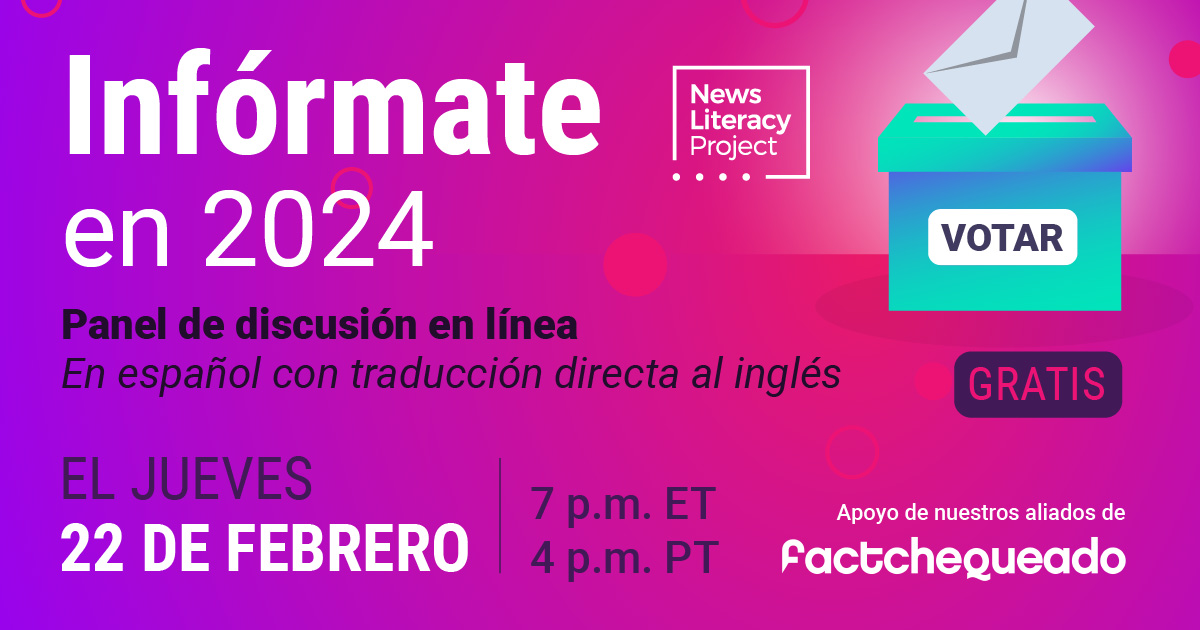
Click here to read the event description in English.
Los hispanohablantes en los Estados Unidos están en riesgo de exponerse a desinformación durante las elecciones de 2024. De mensajes falsos en WhatsApp a subtítulos incorrectos en vídeos en redes sociales, de anuncios engañosos a rumores falsos sobre las votaciones, las comunidades latinas son un objetivo claro de quienes quieren generar confusión sobre los sistemas de elección.
The News Literacy Project ha reunido a un panel de periodistas y expertos para ayudarnos a comprender por qué y cómo los hispanos están en riesgo.
Aprenderemos sobre temas y sobre los motivos detrás de la desinformación que tiene como objetivo a los hispanohablantes, sobre maneras de evitar la desinformación durante las elecciones en 2024 y cómo encontrar información creíble.
Las panelistas son Tamoa Calzadilla, editora en jefe de Factchequeado, Jesús García, editor de política en La Opinión, Elián Zidán, presentador del Edición Nocturna en Univision, y Cristina Tardáguila, consultora para el Instituto Democracia de las Américas.
Alba Mendiola, una embajadora para News Literacy Project, es la moderadora de la conversación. Alba fue periodista por 18 años y ahora es una maestra de periodismo en Chicago.
La conversación será en español con traducción directa al inglés.
Sobre las panelistas
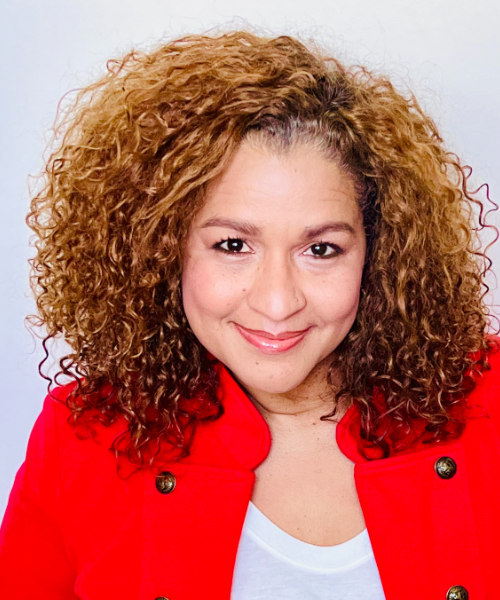
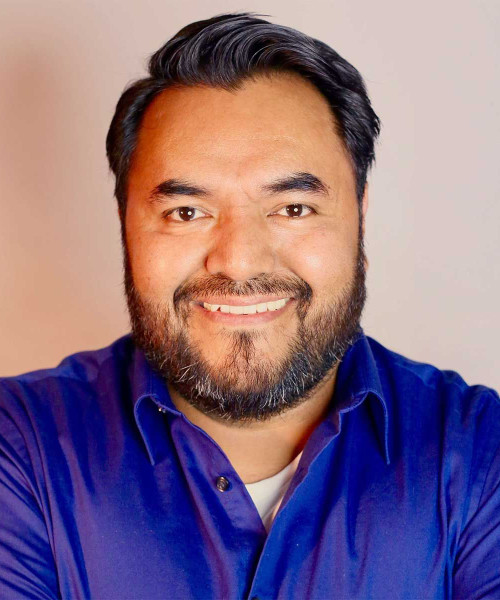


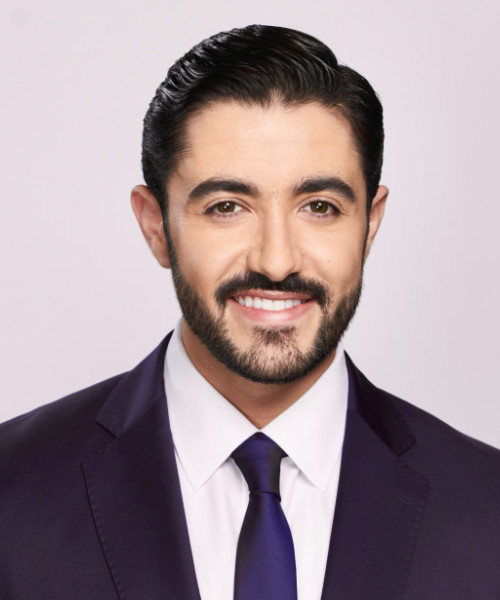





Sobre la moderadora



Be informed in 2024
- Thursday, Feb. 22 | 7 p.m. ET / 4 p.m. PT
- Free
- Virtual panel discussion
- In Spanish with live translation to English
Spanish-speaking Americans are at high risk for mis- and disinformation during the 2024 elections. From erroneous WhatsApp messages to incorrectly subtitled social media videos, false rumors and attack ads, Hispanics and Latinos are targeted by bad actors who seek to disrupt voting and sow mistrust and confusion around election systems.
The News Literacy Project is hosting a panel of journalists and experts to help us understand why and how Spanish speakers are at greater risk. We will learn about common trends and tropes in disinformation that target Hispanics, discuss ways everyone can avoid being misled during the 2024 elections, and explain how to find credible, trustworthy information.
Panelists include Tamoa Calzadilla, editor in chief of Factchequeado; Jesús García, managing editor of politics at La Opinión; Elián Zidán, Univision journalist and anchor of Edición Nocturna; and Cristina Tardáguila, research consultant for the Digital Democracy Institute of the Americas. NLP ambassador Alba Mendiola will moderate the discussion. Mendiola is a veteran journalist and journalism teacher in Chicago.
This conversation will be held in Spanish with live translation to English, including spoken interpretation and subtitles.
About the panelists












About the moderator



Is it misinformation?
Join the News Literacy Project for a free webinar to learn how to identify and avoid misinformation online and in your social networks.
Is it misinformation?
What is misinformation? How can we spot it and avoid it?
In this webinar, we’ll explore current trends in misinformation so you identify and avoid it when you see it. We will learn how to identify types of misleading, inaccurate and false information and how to recognize common propagators of falsehoods.
Dan Evon on spotting misinformation in the Israel-Hamas war
The best way to help people avoid misinformation is to give them the tools to spot it, NLP’s Dan Evon said in a recent interview with CBS News.
When young people view conflicts like the Israel-Hamas war through the lens of social media, false information can seep into the views they develop about the world, he noted.
“The same tip that I give every single time is to slow down,” Evon said. “Look for authenticity; look for the source; look for evidence; look for reasoning and to look for the context.”
Watch or read the full piece here.
2023 The year in misinformation: News literacy takeaways
This past year, artificial intelligence generators became a proficient misinformation tool. With a little human input and a few clicks, anyone can quickly fabricate convincing (and misleading) fake images, audio or text. Still, bad actors don’t need elaborate technologies to mislead people. Tactics that are cheap and easy, like presenting an image or video out of context, are still more prevalent than their AI counterparts. Even worse, recent changes to X (formerly known as Twitter), such as altering the meaning of its blue check symbol or removing headlines from link preview panels, have made this content easier to spread and more difficult to spot. As the year ends, we review misinformation trends and the news literacy lessons they offer, so we can resolve to be better news consumers in 2024.
1. Truth remains in the AI of the beholder
AI generators are complex tools that make it simple to quickly fabricate synthetic digital images of, well, almost anything: the pope in a puffy coat, explosions at the White House, former President Donald Trump being arrested and crying babies in the rubble of destroyed buildings. Voice cloning AI tools also can create other deceptions: Videos of public figures saying things they never did. By altering the mouth movements and adding an AI audio replica voice to a genuine video, purveyors of disinformation falsely made it appear that former NBA player Shaquille O’Neal promoted a new Medicaid spending card, that President Joe Biden confirmed the existence of aliens or that environmental activist Greta Thunberg called for the use of “biodegradable” bombs in Israel.
Newslit takeaway
AI image generators aren’t flawless, and careful observation often reveals clues that may indicate if a particular image is authentic. But that’s not the only way to know something is amiss. Look at the surrounding context. Who shared the image? Where was it originally posted? Have any credible news outlets published it?
2. Israel-Hamas war and fake conflict rumors
Not only were AI image generators used to spread false rumors about the Israel-Hamas war, but the mere existence of these tools lent conspiracy theorists another reason to push absurd falsehoods that the war itself was being staged. Along with AI misinformation, many of the false claims that spread on social media after the start of the war relied on the same old tactics that we’ve seen in years past: conspiratorial rumors about “crisis actors” and fabricated news reports spread to sow doubt about the conflict itself, mislabeled images of crowds and protests shared out of context to garner support (or opposition) for one side or another, and video game clips shuffled into the mix of war footage by engagement-seeking opportunists.
Newslit takeaway
The amount of misinformation about the Israel-Hamas war is a clear reminder of how important it is to get news from standards-based sources with a track record of getting the facts right and strong incentives to do so. Remember, one of the main goals of misinformation is to create doubt and distrust in mainstream news coverage.
@newslitproject Let’s take a look back at some of the biggest stories in misinformation from 2023 and see what we can learn from them. #HappyNewYear #YearInReview #Misinformation #NewsLiteracy ♬ original sound – News Literacy Project
3. Musk, X and platforming misinformation
Following Elon Musk’s purchase of Twitter in October 2022, the site underwent numerous changes that disinformation researchers and experts criticized as seemingly designed to help the spread of misinformation and make accurate claims more difficult to find. The site’s verification symbol, which once signified the authenticity of an account, became a badge that anyone could buy for $8 a month. This, unsurprisingly, led to a rash of impostor accounts and some of the biggest drivers of false claims.
Several news outlets left the platform due to Musk’s changes, including NPR, after the site falsely labeled them as “state-affiliated media.” Many advertisers followed suit, as they didn’t want their content to appear beside antisemitic or white nationalist posts. Musk himself has promoted debunked conspiracy theories, and at the end of the year, reinstated the account of Alex Jones, a far-right pundit who promoted the false idea that the Sandy Hook Elementary School shooting was a “false flag” event. X also removed headlines from preview panels, which made it harder for people to recognize and read news — and easier for bad actors to misrepresent the contents of a link with a misleading claim.
Newslit takeaway
Information on X, like all social media sites, moves quickly and relentlessly — and the changes to the platform require everyone to recalibrate how they use it. It’s more important than ever to be cautious and use basic verification practices when using the platform.
4. Subtitles and subterfuge
In 2023, social media saw plenty of videos featuring people speaking languages other than English accompanied by inaccurate subtitle translations, such as this video, which appeared to show the emir of Qatar threatening to cut off the world’s oil supply. As with voice clones, this method of disinformation literally puts words into a person’s mouth and makes it seem as if they expressed an opinion they never did.
Newslit takeaway
One reason that these falsely captioned videos are effective is because people inherently trust subtitles, since we are all accustomed to encountering good-faith translations of movies and TV shows. On social media, however, it is important to take some time to consider who is providing the purported translation, as purveyors of disinformation often add these captions.
5. Climate and meteorologist misinformation campaigns
Meteorologists and weather reporters covering climate change and extreme weather events received a slew of death threats, spurred on in part by persistent misinformation campaigns attempting to cast doubt on the overwhelming scientific consensus about climate change. People who do not agree with mainstream science that says the climate is changing and who are bent on convincing the public to doubt this consensus relied on a familiar playbook in 2023: doctoring weather maps, fabricating translations and misrepresenting data points to try to convince the public that scientists, the media and meteorologists are lying about climate change.
Newslit takeaway
A key feature of online disinformation campaigns is the ongoing attempt to discredit reputable sources. By casting meteorologists, health groups, scientific organizations, the press and other credible sources about climate change as untrustworthy, purveyors of disinformation can steer audiences to false information and unreliable sources. Pushing back against misinformation isn’t just about debunking individual claims, but also understanding the overarching goal of these campaigns.
Bonus: Continuing COVID rumors just won’t quit
As 2023 began, vaccine skeptics were still busy spreading persistent falsehoods about the COVID-19 vaccine. Moments after NFL player Damar Hamlin collapsed during a football game at the end of 2022, they falsely blamed a COVID-19 vaccine. Then over the next few months, as Hamlin reappeared in public, conspiracy theorists also claimed that he died and a clone replaced him. While it has been nearly three years since vaccines were released, and studies continue to show that they are both safe and effective, they remain a reliable topic for bad actors to exploit with fearmongering and conspiratorial claims.
Newslit takeaway
While examples of falsehoods about COVID-19 vary in their details, they frequently fall into the same general buckets: A celebrity “died suddenly” due to the vaccine; the government is planning new pandemics to enact lockdowns, and vaccines are more dangerous than the disease itself. Being mindful of common misinformation tropes can help us better recognize them the next time we encounter one.
In the news: NLP experts on navigating Mideast war misinformation
The Israel-Hamas war has opened a floodgate of misinformation, with even standards-based news outlets struggling to verify facts on the ground. In this confusing information landscape, journalists across the country have turned to our News Literacy Project experts for help explaining how to find credible information.
EducationWeek
“Misinformation flourishes in times of breaking news, especially on social media,” said Pam Brunskill, senior manager of education design at NLP. “There’s going to be a lag in what’s happening and when it can be verified.” Read the story here.
NBCU Academy
“There are literally hundreds of falsehoods going around,” said Dan Evon, senior manager of education design at NLP. “So, one of the things that people have to keep in mind, especially during these breaking-news events, is making sure they know where they’re getting their information from.” Read the article here.
WBEZ Chicago’s Reset with Sasha-Ann Simons
“Taking things out of context and presenting them in a new, false context is far and away the most common type of mis- and disinformation. It’s very easy to produce and in breaking news events it proliferates quite quickly,” said Peter Adams, NLP’s senior vice president for research and design. Listen to the program here.
CSPAN’s Washington Journal
“Anytime you have a situation like that, and people’s biases are strongly invoked, that is a perfect recipe for people to lean into information that they like or they prefer and to dismiss information they don’t. The more strongly people feel about the situation, the more vulnerable they are to falsehoods, half-truths, to quick takes that they see online,” Adams said. Watch the segment here.
NewsNation
“The first thing we tell people is just number one, remember that misinformation does thrive during breaking news events, including wars, and we absolutely have to be cautious about what we share. Just because something has [a] huge amount of views or likes does not mean it’s credible,” said Hannah Covington, director of education design at NLP. Read the piece here.
Boston Globe
In a front-page story, John Silva, senior director of professional and community learning at NLP, said: “It is so easy to create things, especially with these new generative AI tools, or even with basic Photoshop.” Read the article here.
Cap Radio’s Insight with Vicki Gonzalez
When we are processing information emotionally, it is far easier for misleading and false information to manipulate us into believing that it’s true. So, especially in breaking news situations, especially issues where lots of people are talking about it, that’s when we need to pause and wait, and try to think, ‘OK, where can I get credible information?’” Silva said. Listen to the program here.
2022, the year in misinformation: News literacy takeaways
2022 Misinformation Year in Review
In 2022, misinformation continued to spread on social media and make its mark on the news cycle. From “cheap fakes” to miscaptioned videos to conspiratorial claims and rumors made entirely out of whole cloth, we review some of the biggest misinformation claims of the year and offer tips on how to better navigate social media in the new year.
1. Breaking news rumors
Even during the earliest stages of Russia’s invasion of Ukraine in February 2022, propagandists swarmed social media to muddy the waters and alter the narrative. The driving focus behind many of these rumors was to downplay the severity of the attack by claiming the war was somehow faked or staged. Social media posts used miscaptioned news footage and altered news reporting, and behind-the-scenes movie footage that had nothing to do with the war to support the false claims.
Other purveyors of misinformation took a different approach, connecting the conflict to a wide range of conspiracy theories, including that Ukrainian President Volodymyr Zelenskyy was related to billionaire George Soros and that the United States was operating secret biolabs across Ukraine. Video game footage was also passed off as “shocking” evidence of military attacks, and a spate of rumors amplified Russian disinformation narratives, including false claims that the Ukrainian resistance is made up of Nazis.
NewsLit takeaway: Breaking news events — especially those that occur in foreign countries and during chaotic times in which information is scarce and the situation is in flux — provide ample opportunities for purveyors of misinformation to spread false claims. Russia, arguably the world’s leading producer of disinformation, has a strong interest in manufacturing confusion and doubt about its invasion. Be cautious about sharing information during breaking news cycles before it has been confirmed by credible sources.
2. Anti-vaccination falsehoods
The COVID-19 pandemic led to a rise of anti-vaccination sentiments that persisted in 2022. Vaccine denialist narratives that were prominent in 2020 and 2021 gained more mainstream traction as they were amplified by celebrities and repackaged into slick pseudo-documentary films. While many of the anti-vaccine rumors that circulated in 2022 were simply rehashed versions of previously debunked claims — a nonexistent increase in athletes collapsing, bogus claims about vaccines altering DNA, misattributed celebrity deaths and a false depopulation theory — their prevalence and proliferation meant that health misinformation continued to spread.
NewsLit takeaway: Anti-vaccination rumors infected a wide range of communities, from alternative health and wellness groups seeking “natural” remedies to anti-government followers opposed to regulations and mandates. These false rumors (like many conspiracy theories) appeal to people because they seem to provide answers during times of uncertainty, but they merely shelter people from the truth. Seek out health information from credible sources, such as the Centers for Disease Control and Prevention and the World Health Organization.
3. Election fraud allegations
Ripples from the “Big Lie” of the 2020 presidential election continued to reverberate into the 2022 midterm contests. Some social media users repackaged familiar tropes — exaggerating mundane technical problems, misrepresenting the actions of poll workers, and spreading baseless lies about election laws — to cast doubt on the process and results.
NewsLit takeaway: Despite the false claims, very few cases of voter fraud occurred during the midterms. And election fraud falsehoods didn’t have the same impact as in 2020. One reason for this may be the rise of “prebunking” — or identifying examples of rumors that users are likely to encounter as an event approaches. The News Literacy Project produced this infographic to alert people about the types of rumors they would likely see during the midterms.
4. Economic conspiracies
The world in 2022 continued to experience interruptions in the supply chain that contributed to food and product shortages and inflation, while demand and supply imbalances led to higher gas prices. The effects of Russia’s war in Ukraine and the COVID-19 pandemic rippled throughout the global economy as well. Some social media users exploited the issues by catastrophizing their impact and spreading falsehoods about their causes. Alarmist falsehoods politicizing shortages in infant formula circulated, as did baseless claims that the U.S. was on the brink of running out of diesel fuel. Conspiracy theorists also pushed absurd claims that a government cabal was intentionally causing shortages — by representing videos of crops being burned or cows dying in a heat wave to contend these resulted from deliberate state actions.
NewsLit takeaway: Partisans and conspiracy theory communities often spin and exaggerate real world events to fit their own agendas. Following standards-based news organizations on social media can help mitigate the spread of these misleading takes. Practicing lateral reading also helps avoid conspiratorial rabbit holes.
5. Altered audio
One popular form of misinformation in 2022 involved genuine video clips with unrelated pieces of audio added to them. Anti-Biden chants and jeers were added to videos of first lady Jill Biden at a football game, former President Barack Obama at a rally, and President Joe Biden during a visit to London for Queen Elizabeth II’s funeral. Digital software capable of impersonating celebrity voices was also used to spread misinformation, such as this doctored video of former President Donald Trump appearing to praise Ye, the artist formerly known as Kanye West, shortly after West showed support for Nazis, and this video of Elon Musk seeming to mock “crybaby liberals” shortly after taking over Twitter.
NewsLit takeaway: Deepfakes tend to attract attention, but purveyors of misinformation also can create quick and convincing videographic fakes with simple manipulations of context, or by merely swapping out the audio. These altered videos can be detected by tracking down the authentic source footage, but it’s a step few people take as they scroll through their feeds, especially when the message resonates with their existing views and biases.
6. Fake litter boxes and anti-transgender claims
One of the biggest stories of the year never happened. A baseless, transphobic internet falsehood about (nonexistent) schools accommodating (nonexistent) students who “identify as cats” made its way into school board meetings as secondhand anecdotes, then were amplified by right-wing podcasters and pundits. Influential podcast host Joe Rogan, for example, shared a claim on his show that his friend’s wife worked at a school that was forced to install such a litter box to accommodate a student; he later retracted the story because there was no evidence that it was real. Litter boxes quickly became a modern-day urban legend.
NewsLit takeaway: Confirmation bias can be incredibly powerful. The right-wing media ecosystem regularly highlighted controversies over transgender people using bathrooms, competing in sports and choosing their own pronouns. Anger and fear over this issue intensified in some partisan circles and paved the way for implausible scenarios (a school installing a litter box for a child to use instead of a bathroom) to be credulously believed and repeated as a political talking point. Be sure to check other sources of credible information before sharing a viral or controversial post.
7. Flat Earth and climate-change lies
Even as NASA’s James Webb Space Telescope captured images of distant galaxies, social media users were busy spreading rumors that the Earth was flat. Even more disconcerting, there was a general rise in climate misinformation in 2022, including false claims maligning electric cars, a fabricated magazine cover that indicated climate change is a hoax and accusations that the media was doctoring weather maps to sow panic.
NewsLit takeaway: Misinformation relies on the rejection of credible and authoritative sources. This is exemplified in the flat Earth conspiracy theory and, more importantly, in the rejection of overwhelming evidence of Earth’s changing climate. To follow climate change developments, seek out information from standards-based news organizations and credible science sources.
Podcast special | “Sandy Hook at 10: Tragedy, Conspiracies and Justice”
On Dec. 14, it will be 10 years since a gunman walked into Sandy Hook Elementary School in Newtown, Connecticut, and killed 20 first graders and six adults. Soon after, conspiracy theories calling the massacre a hoax emerged. And they have persisted for a decade, thanks to amplification and profiteering by “alt-right” media figure Alex Jones.
In a special two-part episode of our podcast Is that a fact? — “Sandy Hook at 10: Tragedy, conspiracy theories and justice” — we explore the aftermath of the shooting and how what seemed like an aberration of untruths would instead develop into a bellwether for a shift in public discourse, with conspiracy theories becoming a common element of tragic events. We also discuss how victims’ families have fought back against the lies and harassment and brought about lasting change.
‘Typhoid Mary of the Sandy Hook hoax’
In part one, Elizabeth Williamson, a feature writer with The New York Times and author of Sandy Hook: An American Tragedy and the Battle for Truth, explains the incomprehensible need to deny reality and the lucrative market that exploits people’s vulnerability. “He is a sort of a Typhoid Mary of the Sandy Hook hoax,” Williamson said of Jones. She noted that he “has been there at every stop along our descent as a nation down the rabbit hole.”
A father fights back
In part two, we speak with Lenny Pozner, father of Noah, the youngest victim at Sandy Hook. Pozner knew early on that the hoaxers’ movement would be widespread, lasting and harmful. So, he chose to fight back on behalf of his child and other victims. “Noah’s story will always need to be told because there’ll always be someone misusing it,” he said. “I knew that I needed to do everything that I’m able to do to help debunk, to help clarify, to tell my story as best as I can, which really is just telling Noah’s story.”
We hope you’ll listen to these compelling interviews and share them with your community, helping to make sure facts and evidence are front and center in these conversations.
For more insightful interviews about misinformation, news literacy and society, be sure to check out the first two seasons of Is that a fact?. Season One analyzes misinformation and elections, and Season Two addresses false narratives and the harm they cause.
Helping students lead productive conversations this holiday season and beyond
For those celebrating holidays this season, it can be a joyful time to get together with loved ones. However, navigating conversations with family and friends — especially any who have been misled by mis- and disinformation — can also be stressful.
Educators can help students develop the skills to confidently manage these situations, and understand and debunk misinformation they may encounter, using resources from the News Literacy Project in their lesson plans. Below is a curated selection of lessons, exercises and articles that can be useful to integrate into a middle or high school news and media literacy curriculum.
Start with our article and infographic “How to teach news literacy in polarizing times” for strategies on how to approach issues such as partisanship and credibility.


Assign
Educators can help students analyze the information landscape by assigning lessons through our Checkology®virtual classroom. These suggestions — just three of the platform’s 18 lessons for grades 6-12 — help students understand misinformation, spot conspiracy theories and discover the primary purpose of individual pieces of information.
Assign these and other media and news literacy lessons in just a few clicks. (It’s free!)
Supplementary Exercises
By assigning supplementary Checkology exercises, challenges and missions, educators can help improve students’ recognition of misinformation and strong evidence. (A free Checkology account is required to assign these exercises; register now.)


Read
These articles provide some basic skills for recognizing misinformation and confronting it — plus, they include helpful infographics for visual learners.
Discuss
Check out our collection of topics on Flip, packed with relevant classroom activities and discussion-starters. The topics below cover how to conduct conversations with empathy and respect, how to share information responsibly online and more. (Note: To add topics to a group, be sure to create a Flip account.)
- Flip topic: How to (respectfully) speak up
- Flip topic: Take care when you share
- Flip topic: Don’t just react. Reflect!
By teaching classes how to apply critical thinking and news literacy skills in their lives, you’ll equip students with the ability to identify fact from fiction — an invaluable gift during the holiday season and beyond. A great starting point (especially if you are looking to fill shorter, end-of-semester days) is Checkology; get started today!
NLP: With Sandy Hook ruling, Jones to suffer consequences of his lies
In response to a Connecticut jury decision that ordered conspiracy theorist Alex Jones and his company to pay at least $965 million to those harmed by his lies about the 2012 Sandy Hook mass shooting, the News Literacy Project released the following statement:
“There are few things more heinous than deliberately and repeatedly spreading conspiracy theories and false information about a mass school shooting where families lost loved ones. Yet, that’s what Alex Jones did and today a jury in Connecticut is making him suffer the consequences for his lies.
“Jones spread disinformation about the murder of young children and school officials at Sandy Hook Elementary School in Newtown, Connecticut, that caused the parents, loved ones and an FBI agent to be relentlessly harassed about the horrific tragedy. According to the Washington Post, ‘Within hours of the shooting, Jones was telling his audience that it was staged as a pretext for confiscating guns. Within days, he began to suggest that grieving parents were actors. In the years that followed, he repeatedly said the massacre was faked.’ He also used these outrageous claims for self-promotion — both to raise his profile and generate revenue.
“Now juries in Texas and Connecticut that heard all the details and defenses about the two cases have ruled against him and ordered him to pay more than $1 billion in punitive and compensatory damages. The message they sent is clear: Jones must be held accountable for spreading lies that led to the harassment of innocent and already suffering families and for distorting the national debate about one of the most urgent issues of our time. The enormous sum he must pay should serve as a deterrent to others who hope to profit from disinformation.”
‘Unite around facts’
“At NLP, our work is dedicated to helping people learn how to recognize fact from fiction. We are dedicated to stopping the spread of mis- and disinformation by providing free resources to prevent people from falling for conspiracy theories and to help them gain the skills to determine the credibility of information sources. This verdict is a major victory for those who want to unite around facts and credible information in people’s lives, and it is a bright spot in the often overwhelming fight against misinformation. We can all rest a bit easier with the knowledge that at least some purveyors of lies and disinformation who seek personal gain at the expense of the public good will be held accountable.”
Founders’ concern about fractured America relevant then, now
How are you celebrating the Fourth of July — with fireworks, a parade, a family cookout?
Try sharpening your news literacy skills! Our nation’s founders would be proud of you.
While they didn’t have to contend with the 24-hour news cycle, internet trolls or dangerous conspiracy theories, the Founding Fathers were concerned that misinformation and siloed thinking could weaken our young democracy.
In PoliticusUSA Tim Libretti, an Illinois university professor, wrote that the founders worries extended beyond meddling by foreign powers. They also were concerned about the vulnerability of the population to deceit and manipulation by their fellow citizens. However, the Founding Fathers put great stock in the people’s ability to make sound decisions based on facts that served the public good.
But John Adams had his doubts, Libretti noted. He feared that “human reason, and human conscience, … are not a match for human passions, human imaginations, and human enthusiasm.”
Factionalism, then and now
Adams wasn’t the only Founding Father with concerns. In America Magazine, a Jesuit publication, Matt Malone wrote that James Madison worried about factionalism, or the public breaking down into small, single-minded groups that act at the expense of the greater whole. And the Father of the Constitution provided an example: Tiny Rhode Island, which was beset by factionalism. “Madison believed that only a large society, occupying a vast expanse of space, could be effectively governed as a republic. If the place were too small, then like-minded people could too easily find one another and form a faction,” Malone wrote.
He quotes Madison as saying,“In the extended republic of the United States a coalition of a majority of the whole society could seldom take place on any other principles than those of justice and common good.”
Today, millions of Americans need not cram themselves into 1,200 square miles — the size of Rhode Island — to form a powerful and destabilizing faction. Thanks to the internet and social media they can just look at their phones.
With little effort, anyone can find groups of like-minded, passionate people whose beliefs are often based on misinformation and conspiracy theories, with QAnon being one of the most widespread and dangerous. Many adherents were among the rioters who stormed the U.S. Capitol on Jan. 6, 2021.
Education is the antidote
What can you do on July 4 to stand up for the Republic? Become more news-literate so you are not vulnerable to conspiracy theories and factionalism.
And put your faith in the power of education, as Thomas Jefferson did. “I think by far the most important bill in our whole code is that for the diffusion of knowledge among the people. No other sure foundation can be devised for the preservation of freedom, and happiness,” he wrote in 1786.
Of course, his idea of diffusion of knowledge excluded enslaved Africans and all women.
At NLP, we strongly believe that education is the most effective and equitable approach to developing a more news-literate public. Our society relies on people who can think critically, engage responsibly with information, value our democracy and participate in keeping it robust. That’s why we hope you’ll spend some time with our resources to sharpen your ability to recognize misinformation. And please share that knowledge with your family, friends and network.
Happy Fourth of July!
Tools for recognizing information and helping others do the same
A big part of being news-literate is knowing what to watch out for and being able to recognize misinformation. That way, you can pause when you see it — and NOT share!
You can also respond to posts in replies and comments, letting others know — without amplifying —content that is false, misleading or taken out of context.
Why do people share misinformation? Bad actors and those attempting to cause confusion share disinformation, typically for personal, political or financial gain. But many people, often with good intentions, are fooled into sharing falsehoods, further polluting the information landscape.
Our misinformation infographic can help you understand what misinformation is and how to recognize it.
Talking with family and friends
While always problematic, when misinformation appears alongside pet photos and family updates on social media, it can be especially frustrating and unwelcome. It’s one thing if a stranger spreads falsehoods online. While every scenario is different, following some general best practices can help keep the conversation civil and make the interaction worthwhile. It may not be easy but talking to loved ones about false or misleading content can help them think twice about what to share in the future. Stepping into the role of fact-checker when it comes to loved ones can be tricky and stir strong emotions, so it’s worth preparing for — especially as more falsehoods seep across social media and into family and friend group chats. Check out this poster, How to speak up without starting a showdown, which outlines six steps to guide you through a conversation with family and friends.
Critical points to remember about misinformation:
- Falsehoods always reach more people than corrections.
- Once misinformation is online, it spreads quickly.
- Anyone can fall victim to falsehoods.
- There’s no such thing as good misinformation — facts matter!
‘Truth in Our Time’ events look at disinformation through cultural lens
Russia’s invasion of Ukraine, the COVID-19 pandemic and the Jan. 6 riot at the U.S. Capitol have something in common — all are steeped in and fueled by disinformation, false narratives and censorship.
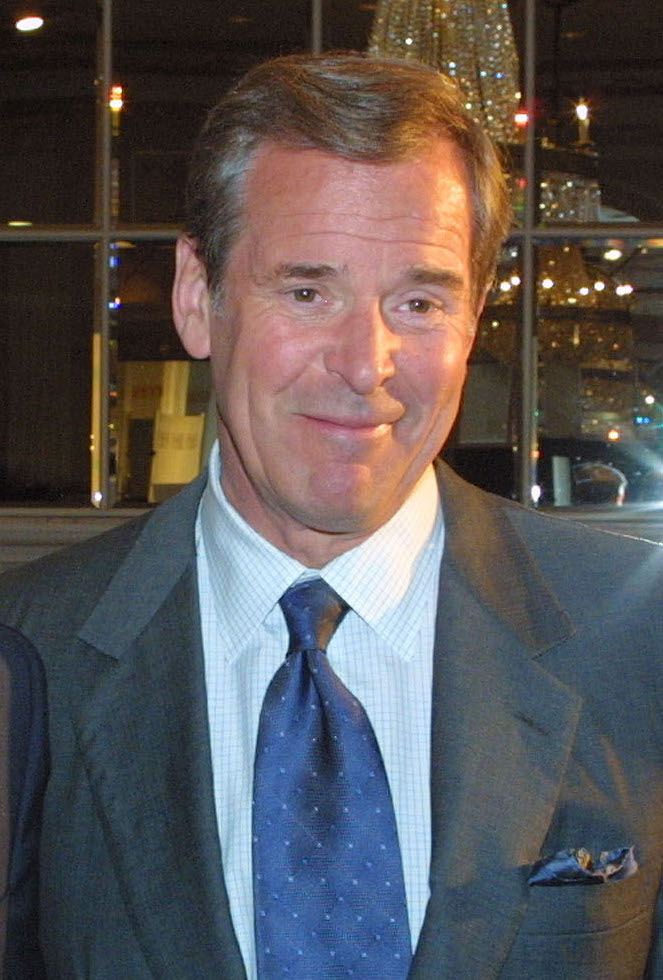

Peter Jennings at the 61st Annual Peabody Awards Luncheon, in 2002. Photo credit: Anders Krusberg / Peabody Awards
These dangerous forms of misinformation do more than threaten our ability to determine facts from falsehoods; they also threaten our culture. This through line became clear during a panel discussion titled “Truth in Our Time” held in New York City this month as part of a commemoration of the late journalist and ABC Evening News anchor Peter Jennings. David Muir, the network’s current news anchor, moderated the conversation, which featured Javier Hernández, a culture reporter at The New York Times; Gillian Tett, editor-at-large, U.S., of the Financial Times, and Alexander Shelley, music director of Canada’s National Arts Centre Orchestra.
The Centre sought to honor Jennings, a native of Canada, for his commitment to reporting the truth, and commissioned a work by composer Philip Glass for the event. Glass’ Symphony No. 13 had its U.S. premiere at Carnegie Hall the evening of the panel discussion. Muir, who worked at ABC News during Jennings’ tenure, said the day’s theme evoked the iconic journalist’s character and values. “Peter Jennings had a devotion to the truth, to fact-checking,” he said.
‘What is truth, what is the role of culture?’
Muir began the afternoon’s discussion by asking, “How can we try breaking through the competing forces of what is news, what is the truth, what is the role of culture?”
Tett, who was a Ph.D. student living in the Soviet Union in the 1990s during the Tajikistan civil war, saw firsthand how totalitarian governments silence dissension and terrorize citizens. “I got that knock on the door at midnight when the KGB went house to house,” she said. One family she knew held on strongly to their culture throughout the upheaval. “They used music to express their creativity and communicate from East to West at the intersection of the Silk Road,” Tett said. “Music can be a bridge. And I hang onto the hope that music can be a bridge.”
Hernández described how, in addition to news reporting, music and culture can tell the stories of people living through war and oppression. “It’s about the power of the individual, the power to connect people, shine a light on the truth,” he said, recalling how a musician once told him, “I play my music because music reminds me that we are all human.”
Hernández said this underscores how suppression of free speech directly impacts the arts. “Any attack on free press and journalism is an attack on musicians, books, music,” and all arts and culture.
Because art, like journalism, can express the truth, understanding that both play important roles in upholding a free society gets at the heart of news literacy. And it underscores why being news-literate matters more than ever.
Historical perspective
Previewing the evening’s concert, Shelley said that Glass “jumped at the chance” to write a symphony on the theme of truth, with other works in the program also addressing the impact of autocratic regimes on culture from a historical perspective. The Violin Concerto by Erich Wolfgang Korngold was written in 1945, after the composer, an Austrian Jew, fled the Nazis. “He wrote this piece when the Nazis fell and wouldn’t write it beforehand. It represents the scales falling from the eyes,” Shelley explained.
During this same time, Soviet dictator Joseph Stalin asked composer Dmitri Shostakovich to write a patriotic piece to mark the end of World War II. Given the crimes of the regime, Shostakovich felt he could not write something patriotic, Shelley said. Instead, he wrote something very different. “This piece is sardonic, sarcastic. It speaks to the feeling of living in tyranny.”
The night’s encore, a late addition to the program, brought the audience back to the present and the deadly war in Ukraine. “We Do Exist” was written by Ukrainian composer Yuri Shevchenko based on the country’s national anthem. The selection acknowledges what is happening in Ukraine in a way that made it terribly real. Shevchenko died of pneumonia in a Kyiv basement last month, as the city prepared for a possible attack by Russian forces, Shelley told the audience.
NLP experts, educators speak with The 74 one year after Jan. 6 insurrection
As the anniversary of the Jan. 6 insurrection neared, the importance of combating misinformation and its real-world impacts were as relevant as ever. How would educators teach this topic now and in the future – particularly to young people who lived to witness it?
Many of the people who participated in the insurrection believed they were fighting to protect democracy. But due to a lack of evidence that the 2020 election was stolen, most of them were misled by misinformation. How does a democracy protect itself from self-destruction when its citizens can’t tell the difference between fact and fiction? It starts with news literacy.
The 74’s Jo Napolitano spoke with Peter Adams, NLP’s senior vice president of education, and Brian Winkel, an Iowa educator, about the importance of news literacy skills and their approaches to teaching them in this difficult climate.
To read the full piece, click here.
2021, the year in misinformation: News literacy takeaways
2021 marked another year of rapidly spreading misinformation following breaking news events, from the Jan. 6 attacks on the U.S. Capitol to the rollout of COVID-19 vaccines to the Biden presidency. Get ready for 2022 by reviewing our news literacy takeaways from the past 12 months. You’ll be prepared to recognize and debunk falsehoods, conspiracy theories and hoaxes in 2022, and know what information to trust, share and act on.
-
Science misinformation
No, vaccines don’t magnetize you, increase the risk of infertility, contain tracking devices, or cause cancer and HIV. But misinformation surrounding vaccines — along with other science-based topics like climate change — continued to deluge social media feeds throughout the year.
News literacy takeaway: Turn to credible, authoritative sources to confirm or debunk science-related content, such as NLP’s COVID-19 resources page or reputable institutions like the Centers for Disease Control and Prevention. And know that bad actors will even resort to cute cat videos as “engagement bait” to draw you to their sites and spread falsehoods.
-
Protests and crowds
Photos supposedly showing large crowds protesting or supporting controversial issues appeared frequently through the year in misleading ways. For example, this photo does not show a large crowd gathering in Washington, D.C., on Jan. 5, 2021, the day before a demonstration to support former President Donald Trump’s efforts to overturn the 2020 presidential election ended in riots. Instead, it shows people participating in the “March for Our Lives” gun control demonstration in 2018. A photo of mass demonstrations in Moscow in 1991 circulated online as “evidence” of large crowds protesting COVID-19 restrictions and vaccine mandates in Austria in November 2021.
New literacy takeaway: Using photos of large crowds in false contexts is a common disinformation tactic used to exaggerate the level of support for a cause. Do a reverse image search to help you find the original context of a photo.
-
Jan. 6 rumors
The attack on the U.S. Capitol on Jan. 6 resulted in a stream of misleading social media posts, falsehoods, and conspiracy theories that began immediately after the riots and continued throughout the year. A fabricated tweet in October that was attributed to Republican U.S. Rep. Marjorie Taylor Greene circulated online days after social media “sleuths” hatched a baseless conspiracy theory that she was the Capitol pipe bomber.
News literacy takeaway: Conspiracy theorists often engage in motivated reasoning and confirmation bias to manufacture “evidence” for their beliefs. When you encounter a far-fetched or controversial claim, check to see if major fact-checking organizations have debunked it. Or go a step further and do your own research by practicing some basic digital verification skills, like reverse image search, lateral reading and other techniques that fact-checkers use to identify doctored images.
-
Biden Presidency and QAnon
QAnon followers continually promoted false claims that Former President Donald Trump actually won the election and President Joe Biden is either posing as president or is being played by a body double until Trump returns to power. In March, false claims spread on social media that video of Biden speaking to reporters at the White House was staged or manipulated using a green screen or computer-generated imagery.
News literacy takeaway: Be aware that false claims about staged political events are often connected to dangerous and baseless QAnon beliefs. Find videos and posts that debunk the claims through a basic Google search.
-
Misleading gas prices
Misleading photos of unusually high gas prices have been used to try to score cheap partisan points online for years, and 2021 was no exception — particularly as prices rose from historic lows during the pandemic. A November photo from a station in Lancaster, California, displayed premium fuel costing nearly $9 per gallon. But the photo was taken out of context and did not reflect actual prices at the time. Other false and misleading examples can be found here, here and here.
-
Empty supermarket shelves
Supply chain problems in the news sparked numerous misleading social media posts, photos and videos, exaggerating the problem or falsely assigning blame. Posts featuring photos of empty supermarket shelves claimed that President Biden’s policies were responsible for food shortages. But the photos were used in false contexts. Some were taken in Australia and England. A photo of empty shelves in South Carolina was from 2018.
News literacy takeaway: Viral rumors presenting photos of empty store shelves are common during disasters and other events that cause disruptions in the supply chain. Be wary of such photos and seek out trusted, standards-based news sources for accurate coverage of supply chain issues.
-
Staged skits out of context
Faked scenarios tied to real events and aimed at building followers on TikTok and other platforms continued as a trend. A video from November that appeared to capture a conflict among crew members on a commercial flight and a passenger demanding a seat change after another passenger refused to show proof of vaccination was actually staged for a short film.
News literacy takeaway: This film was produced by a social media influencer with a history of creating films designed to go viral. Such videos often are published without disclosures that they’ve been staged. These videos can seem authentic at first because there are genuine cellphone videos of fights over COVID-19 rules on planes. Search online to see if a video has been debunked; the fact-checking site HoaxEye found selfies posted by the film’s creators.
-
Vaccine harm claims
Each development in the COVID-19 vaccines rollout — from approval by the Food and Drug Administration, to private company mandates, to the inclusion of shots for children — has sparked viral rumors. As the year began, celebrity deaths, like that of baseball icon and civil rights activist Hank Aaron, also were immediately and falsely tied to vaccines. Rather, Aaron died of natural causes at the age of 86 on Jan. 22.
In November, a photo of a vaccination clinic in Foxborough, Massachusetts, was digitally altered to push an anti-vaccine narrative. Text in a sign in the photo said that COVID-19 vaccines were available without an appointment — but was changed to read “Don’t forget to donate your childrens (cq) organs.”
News literacy takeaway: Many claims of vaccine harm involve sheer assertion and false context. Text on signs, for example, is easy to alter with photo manipulation software and is a common target of bad actors online. Check credible sources regarding the accuracy of any claims regarding vaccine harm, including those that tie deaths or injuries to vaccines. See our lateral reading guide for more tips.
-
Celebrity t-shirts
Doctored images of celebrities wearing t-shirts with provocative slogans were shared widely … again. This post featured George Clooney with a shirt that compared MAGA supporters to Confederates and Nazis. Another showed Captain America actor Chris Evans wearing an anti-Trump shirt. But in both cases the political messages had been digitally added, and the original photo of Clooney was taken in 2015.
News literacy takeaway: Printed messages, including those on t-shirts, are particularly easy to alter and should always be approached with skepticism — especially when they spark a strong emotion or confirm your biases. Also, many of the provocative t-shirt designs that have been digitally added to celebrity photos were created for profit and sold online.
-
Outrage bait
Posts and tweets designed to evoke strong emotional reactions remained a fixture on social media. A tweet took a statement from Florida Republican Gov. Ron DeSantis about COVID-19 vaccine mandates out of context to falsely push the claim that Florida schools will no longer require any vaccinations, even for polio, measles and mumps. Critics of vaccine mandates seized on the cancellation of thousands of Southwest Airlines flights in early October to spread baseless rumors that the service disruptions were due to pilots and crews refusing to work to protest the policy.
News literacy takeaway: Outrage and anger drive engagement on social media. Users casually scrolling through their feeds may react without pausing long enough to figure out a tweet like this was inaccurate, especially if they have strong feelings about the topic. DeSantis said only that there would be no mandate for children to get the COVID-19 vaccine. The Southwest cancellations were due to air traffic control issues and bad weather. Follow our “Sanitize before you share” infographic to help you avoid unintentionally spreading misinformation.
For everyone: Understanding misinformation and how to talk to people who believe it
A news literacy learning series for older adults
The News Literacy Project is hosting a free webinar series Understanding Misinformation and How to Talk to People Who Believe It to foster more productive conversations free of misinformation among friends and family members and across generations — particularly during the holidays. The series is sponsored by the Fore River Foundation and is being offered in partnership with AARP’s OATS/Senior Planet program. John Silva, NLP’s senior director of professional learning, and Elizabeth Price, NLP’s manager of professional learning, will lead the sessions.
These free webinars will help participants understand what misinformation is, how people come to believe it and how to effectively and compassionately communicate and debunk those beliefs. While older adults play a critical role in sorting fact from fiction and helping others to do so, everyone can benefit from resources and support to help prevent harm from mis- and disinformation.
We’ve recorded the four webinars, complemented with additional resources, in case you missed a session or want to revisit a topic. Links are below. We hope you find the program valuable as you become more news-literate and help others to do the same.
In case you missed it:
Watch session 1, The Misinformation Landscape, which discusses how to move beyond the unhelpful term “fake news” to more precisely identify the many types of misleading, inaccurate and false information that we encounter regularly. The session explores how propagators of misinformation use our emotions and cognitive biases to manipulate us. Access the presentation slides here.
Watch session 2, Essential Fact-Checking Skills, which dives into the tools and skills needed to fact-check and verify the authenticity of information as well as how to source its origins for yourself. Access the presentation slides here.
Watch session 3, Productive conversations without confrontation, which shares the skills needed to talk with someone whose beliefs are fueled by misinformation — and still have a productive, non-confrontational conversation. Access the presentation slides here.
Watch session 4, Understanding news media bias, which explores the adjacent subject of bias in news coverage and its potential to mislead and misinform the public. This session will help you think more clearly about what causes bias in reporting, what it looks like in coverage and what you can do when you encounter it in your news diet. Access the presentation slides here.
Coming up in 2022
Please save the date for National News Literacy Week, Jan. 24-28, 2022!
NLP partners with We The Veterans to offer misinformation webinar
Misinformation and disinformation target all of us, with purveyors of falsehoods often exploiting our deeply held values and beliefs, including patriotism. That’s why the News Literacy Project is partnering with We the Veterans, a nonpartisan nonprofit created by veterans and military families, to present a free webinar, Exploring the misinformation landscape: Understanding how and why people believe false information, Wednesday, Nov. 10, at 7 p.m. ET.
We are honored to have the opportunity to reach this audience, but you do not have to be a veteran, active military or a family member to participate. The webinar is open to all.
In this session, John Silva, NLP’s senior director of professional learning and a U.S. Marine Corps veteran, will discuss how to move beyond the unhelpful term “fake news” to more precisely identify the many types of misleading, inaccurate and false information that we encounter regularly.
Silva will explore motivations behind different propagators of misinformation and different ways that they use our emotions and cognitive biases to manipulate us into believing something is true. In addition, he will demonstrate key fact-checking and verification skills for identifying misinformation. By getting to a deeper understanding of misinformation, we all can become less susceptible to it and more likely to prioritize reliable, verified sources of news and information.
About We the Veterans
We the Veterans is a nonpartisan, nonprofit organization created by veterans and military family members, united for democracy and committed to building a more perfect union. Its mission is to harness the strength of veterans and military families to support the pillars of American democracy. We the Veterans unites private and public sector experts and leaders to find solutions to our country’s biggest challenges. The organization’s programming is designed to engage and empower the veteran community, supporters and allies to take action in their local communities and beyond.
Season two of ‘Is that a fact?’ podcast launches today
We’ve just launched the second season of NLP’s Is that a fact? podcast, and this time we are going beyond examining misinformation’s ability to mislead to look at the origins of false narratives and the actual harm they have caused. The new episodes will explore how fictional information emerges and then bubbles to the surface to misdirect the country’s civic and cultural discourse.
As the 20th anniversary of the 9/11 attacks approach, we look back at the untruths and myths that surround that fateful day. One of the core catalysts of 9/11 misinformation was the film Loose Change. Our first guest, Esquire magazine correspondent John McDermott told us, “remains probably the single most popular piece of conspiracy media ever created.” He explains how the film started a movement of conspiracy theorists that planted the seeds for today’s Qanon believers.
The second guest, James Meigs, former Popular Mechanics editor-in-chief, discussed how his team of journalists debunked many of the myths propagated by Loose Change even before the film came out. “What was really powerful about Loose Change wasn’t the specific claim,” said Meigs. “It was the overall mood of the filmmaking … It had really cool music. It had all this slow motion. It had this very compelling narration, even if a lot of it didn’t make a lot of sense. It was quite powerful to watch.”
9/11 impact: A personal perspective
Our final guest, Ann Van Hine, whose husband was a firefighter killed the day of the terrorist attacks, explained how she deals with the anniversary in personal terms. “Everybody has a part of that day. Everybody knows where they were. Everybody has a memory, but you’re actually talking about the day that my daughter’s dad died, the day my husband died. I told my girls early on, if people started saying weird stuff about September 11th, which happened as time went on, then just blow them out of the water. Just say flat out with no preparation for them, ‘My dad was one of the firefighters killed that day.’ Cause that’ll suck the air out of the room. Not to be mean, but sometimes people need a reality check.”
We hope you’ll listen. Over the rest of the season, we’ll examine false narratives about the misperceptions that Democrats and Republicans have about each other, the Sandy Hook shootings, race relations and more. Please join us every other Wednesday for new episodes of Is that a fact? Listen here or on Spotify, Apple Music, Google Play, iHeartRadio, Stitcher, Amazon Music and wherever podcasts are available.
Informable update features new content related to TikTok videos
NLP’s app is now heavy on TikTok content! Our game-like app, Informable®, has added a Mix-Up Mode made up entirely of videos from the hugely popular social media video platform. Users are challenged to develop a news-literate mindset — identifying whether a video has credible evidence for a claim or whether it’s an ad or not, for example.
Informable, free on iOS and Android, is for people of all ages. It helps develop key news-literate habits of mind with four brain exercise modes each made up of three levels. The questions become more difficult as a user progresses from level 1 to level 3. The four modes are:
- Checkable or Not? (Is each item fact-based or opinion-based?)
- Evidence or Not? (Does each item provide strong evidence for the claim it makes?)
- Ad or Not? (Is an item advertising or something else — news, opinion, personal endorsement on social media, etc.)?
- News or Opinion? (Is each item news or opinion?)
To advance, players must correctly identify at least seven of the 10 examples presented in each level. Points are awarded for accuracy and speed. Users can review their answers to learn more about each item and see why they were right or wrong.
Once users complete all three levels in all four modes, they reach Mix-Up Mode, which presents random examples from all modes to simulate the information flow they might experience in real life while scrolling a social media app. This is where the new TikTok examples come in.
The first level is generic, while the second focuses on COVID-19 and the third, newest level is made up of 10 TikTok videos. The game is perfect for anyone who uses the platform regularly or someone who doesn’t. It challenges users to use a critical eye to look for things like #Ad and sources with credible information. Users will leave any Informable experience as smarter news consumers, with a more informed view of TikTok and other content they see on social media.
Download Informable today on iOS or Google Play.
In Discussion: Navigating fact from falsehoods in a changing media landscape
How can consumers figure out fact from fiction in the current media landscape? What strategies should they use to know whether the news they are following is credible? John Silva, NLP’s senior director of education and training, shared his expertise on this topic during a recent panel discussion with CT Mirror, a nonprofit news site in Connecticut.
Silva was joined by Marie Shanahan, associate professor of journalism at the University of Connecticut, and Izaskun “Sassy” Larrañeta, managing editor of The Day of New London. CT Mirror presented the June 29 event in partnership with the Community Foundation of Eastern Connecticut.
Silva explained that false context is one of the most frequent types of misinformation consumers face.
“One really common example is how often people will take a fake screenshot from a satirical article and post it as if it’s a real screenshot,” Silva said. “There was an example from the Babylon Bee, where they had a fake CNN screenshot and it was taken out of the satirical context, published as if it was a real CNN screenshot, and that created this false context and misinformation.”
Silva said NLP tries to teach consumers to dig deeper when they come across content that creates a strong emotional reaction. “You have to look at who’s posting it, where it’s from,” Silva said. It’s easy, he said, for someone to take a snippet of a longer video or an excerpt of a quote, or even to alter a caption for an image, and present it in a misleading way. That’s why understanding the context behind a post is so important.
You can watch the panel discussion here.
Upon Reflection: Cindy Otis and the fight against fake news
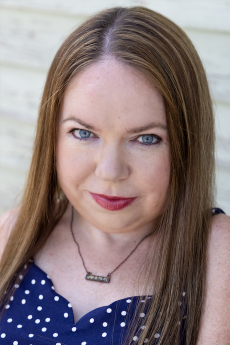

Several months after the 2016 presidential election — which saw both the concerted Russian campaign to undermine trust in democracy and a surge in domestically created false content — she decided to leave the agency and deploy her skills on a different front. The analytic skills she had acquired, she reasoned, could be used to help the public learn how to responsibly assess what they’re reading, watching and hearing.
Her new mission: to educate Americans how to become more discerning about the news and other information they encounter and share. Her goal: to inoculate the public against unwittingly helping our foes undermine our country’s civic life.
“The primary consumers and generators of false information are average American citizens who don’t realize they are propagating false information,” she told me last week. They are assisting “foreign actors who seek to take advantage of Americans who are doing their work for them.’’
Otis has quickly made her mark. In her book True or False: A CIA Analyst’s Guide to Spotting Fake News, published last year and targeted to young adults, she traces the history of misinformation and provides a primer on recognizing it. She is active on social media and has more than 35,500 Twitter followers. She has donated her services to the News Literacy Project, both for events and for the creation of infographics, such as “Eight Tips to Google Like a Pro.” In her day job, she conducts investigations and analysis for the Alethea Group, which advises businesses on detecting and mitigating disinformation and social media manipulation.
The Jan. 6 assault on the U.S. Capitol — a harrowing demonstration of the real-world consequences of disinformation — has given her work a heightened sense of urgency. A new ethos of personal responsibility around evaluating and sharing content of all kinds is needed to stem the further growth of conspiratorial thinking that leads to violence, she said.
“Think about the good we can do as a society if we all take part in the process,” she told me, comparing recycling’s positive impact on the environment with the unceasing necessity to detoxify the information ecosystem.
Otis started writing True or False after people began asking her basic questions — for example, which sources could be trusted. Even though the phrase “fake news” has been politicized and weaponized in recent years, she used it in the title as a way of “retaking it and getting it back” to its original meaning, she said. In the book, she defines fake news as “an attempt to deliberately spread inaccurate or false information in order to mislead others” by making it appear to be true.
The book starts in 1274 B.C. with Ramses II, a young pharaoh who circulated a false, and long-believed, account of his heroic victory over Egypt’s archenemy, the Hittites. She moves seamlessly from ancient times to the invention of the printing press, the partisan newspapers that sprang up during the American Revolution, “yellow journalism” in the early 20th century, Nazi propaganda, the dawn of television and, finally, the advent of the internet. This is where the history ends and the practical examples, case studies and advice begin.
“Knowing the history of fake news gives us a road map to follow to combat it,” she writes in the final chapter. “Truth still exists and … journalists are out there working hard every day to make sure we know what it is. So it’s up to each of us to help fight fake news.”
When Otis isn’t advising businesses on dealing with disinformation threats, she is deep into revising early drafts of her second book, a young adult novel. Currently titled At the Speed of Lies and scheduled for publication in 2023, it tells the story of a high school student who discovers that her Instagram account is being used to spark a cult-based conspiracy theory and has to figure out how to stop it spreading virally.
“It’s meant to show actual consequences from disinformation and conspiracy theories,” she told me. “Showing a fictional character trying to come to terms with that and put the genie back in the bottle once it’s been unleashed.”
As a society, we are long past the point where we can put the disinformation genie back in the bottle. But Otis is right to encourage everyone to recognize its destructive power and to push back against it. We need to appreciate what our adversaries already know: The future health of our democracy is at stake. This is a fight that, together, we must win.
Read more from this series:
- Alan C. Miller: Upon Reflection
- Jun. 17: The media’s dismissal of the Wuhan lab theory
- Jun. 3: Recalling a great newspaper editor and what he represented
- May 20: Supporting journalists serving local communities of color
- May 6: The First Amendment and the need for vigilance
- Apr. 22: Spotlight — a special resonance
- Apr. 8: The 19th* — a nonprofit news startup made for the moment
- Mar. 25: How I became a ‘pinhead’ — a news literacy lesson
- Mar. 11: Fighting the good fight to ensure that facts cannot be ignored
- Feb. 26: Students’ enduring rights to freedoms of speech and the press
- Feb. 11: We need news literacy education to bolster democracy
- Jan 28: 13 lessons from our first 13 years
- Jan. 14: Media needs to get COVID-19 vaccine story right
- Dec. 17: Journalism’s real ‘fake news’ problem also reflects its accountability
- Dec. 3: Combating America’s alternative realities before it’s too late
- Nov. 12: “Kind of a miracle,” kind of a mess, and the case for election reform
- Oct. 29: High stakes for calling the election
- Oct. 15: In praise of investigative reporting
- Oct. 1: How to spot and avoid spreading fake news
‘Sunday TODAY’ features NLP’s efforts to combat misinformation
When the Sunday Spotlight on NBC’s Sunday TODAY with Willie Geist chose to explore the misinformation crisis and efforts to combat it, the show’s producers turned to NLP. The May 16 segment Misinformation education: How schools are teaching kids to find the truth featured NLP’s Senior Vice President of Education Peter Adams. Correspondent Joe Fryer also spoke to Georgia high school teacher Erin Wilder and New York City educator and NLP Ambassador Sandra Street and two of their students to find out more about how they’re using Checkology® to learn to recognize misinformation.
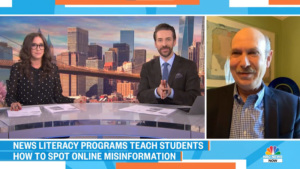

Then, in a follow up story for NBC News Now on Monday, Fryer interviewed NLP founder and CEO Alan C. Miller about how students — and adults — can challenge the credibility of information.
“While students may be digital natives…they are by no means well-equipped to navigate this incredibly fraught information landscape that they have inherited,” Miller told Fryer. “And what we’ve found is that by giving them the tools to discern credible information, to be more mindful consumers of everything that they encounter wherever and however they encounter it. This is incredibly empowering. They are their own editors. They can be their own publishers. We want them to play these roles in ways that are credible, responsible and empower their voices.”
Watch the segments to learn more about the impact of NLP’s work.
Celebrating AAPI journalists and news media
More than 40 years ago, the United States first celebrated the heritage of Asian-Americans and Pacific Islanders (AAPI) with a commemorative week in May 1979. But this year, amid disturbing violence and abuse targeted at Asian-Americans, immigrants and other people of color, appreciating the culture and contributions of the AAPI community is more important than ever.
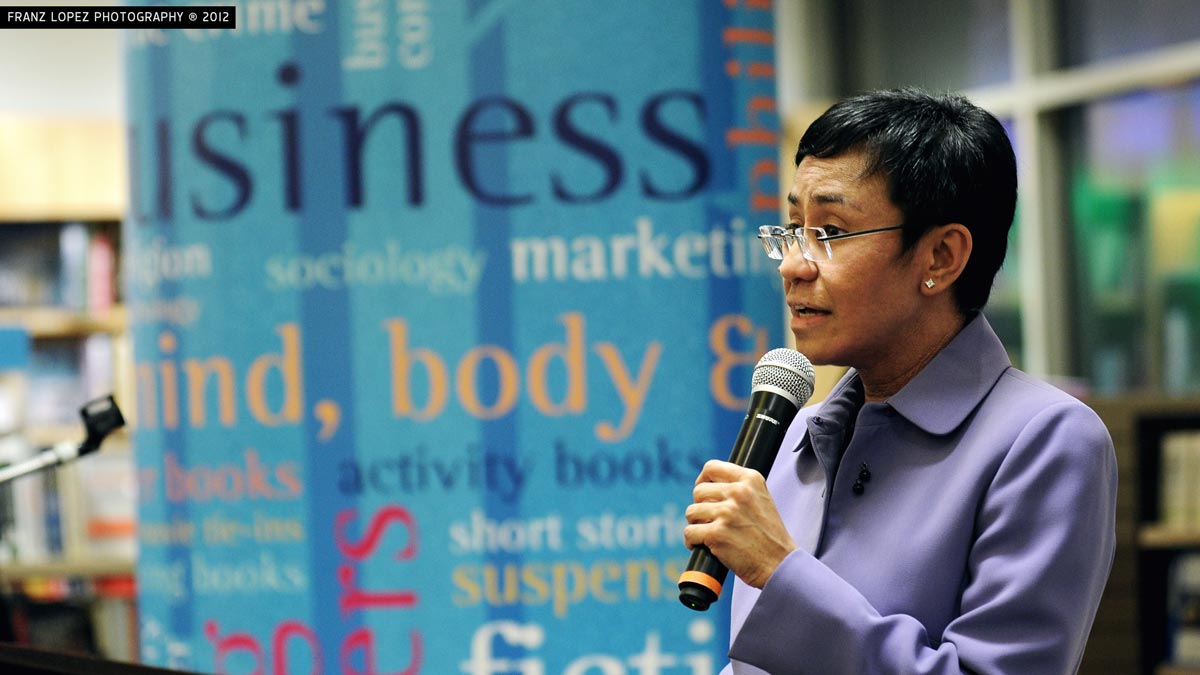

Photo credit: Franz Lopez on Flickr, licensed under CC BY-NC 2.0
For Asian/Pacific American Heritage Month, NLP is highlighting AAPI journalists and news organizations — past and present — on social media. We begin with Rappler co-founder and CEO Maria Ressa. She received the 2021 UNESCO/Guillermo Cano World Press Freedom Prize on the eve of World Press Freedom Day, May 3. Ressa, a Filipina-American journalist, and her team continue their unflinching coverage of President Rodrigo Duterte’s authoritarian rule in the Philippines despite harassment, threats and jail time. In 2020, Ressa was a guest on NLP’s podcast Is that a fact?, where she discussed her work and why she presses on despite the risks. “… you don’t wake up and you say, ‘I’m going to fight for press freedom.’ I never did. I just did my job,” she told us.
Important AAPI milestones
So why is May Asian/Pacific American Heritage Month? The U.S. Congress selected this time of year to celebrate the AAPI community because of important milestones. “The month of May was chosen to commemorate the immigration of the first Japanese to the United States on May 7, 1843, and to mark the anniversary of the completion of the transcontinental railroad on May 10, 1869. The majority of the workers who laid the tracks were Chinese immigrants,” according to the Asian/Pacific American Heritage Month website. Educators will find lessons plans and other classroom-ready resources for teaching about AAPI heritage on the site.
And be sure to follow our thread on Twitter throughout the month as we focus on the impact of AAPI journalists and news organizations @NewsLitProject.
Behind the headlines: Values, trust and media
This article is from a previous issue of our Get Smart About News newsletter for the general public, which explores timely examples of misinformation as well as press freedom and social media trends and issues. Subscribe to our newsletters.
By Hannah Covington


It can be tempting to view the public’s distrust of the news media as simply a matter of political differences. But a recent study offers new ways of looking at and addressing the “media trust crisis.” It suggests that not all Americans embrace the core values that journalists follow in their work, and that this misalignment — rather than partisanship — may help better explain media trust divides. For example, people who value authority and loyalty may be wary of journalists’ role as watchdogs over the powerful.
“When journalists say they are just doing their jobs, in other words, the problem is many people harbor doubts about what the job should be,” the report said.
The study was released on April 14 by the Media Insight Project — a collaboration of the American Press Institute and The Associated Press-NORC Center for Public Affairs Research — and examined “public attitudes toward five core values of journalistic inquiry.”
Most agree on importance of facts
These values include acting as watchdogs over powerful people; making information open and transparent; valuing facts in pursuit of truth; offering a voice to those lacking power; and shining light on societal problems.
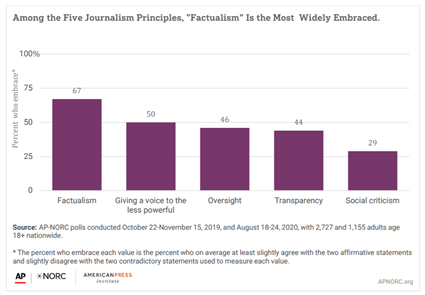
Only 11% of Americans fully embrace all five of these principles, the study found. The importance of facts in pursuit of truth attracted the most widespread support (67%), while just 29% of Americans embraced spotlighting social problems as an effective way to solve them. Distrust among these groups, the study points out, “goes beyond traditional partisan politics.”
The study highlights ways that news organizations can rebuild trust without compromising core values. Simple tweaks to headlines, first sentences and story framing, for instance, can go a long way to broaden the appeal of news reports among a wider audience.
Related:
- “American Views 2020: Trust, Media and Democracy” (Gallup and Knight Foundation).
- “Americans See Skepticism of News Media as Healthy, Say Public Trust in the Institution Can Improve” (Pew Research Center).
Media Bias: Current Conversations
Peter Adams, NLP’s senior vice president of education, will discuss media bias and show consumers how to evaluate news coverage in a virtual presentation for the St. Charles City-County Library Current Conversations series.
People frequently perceive and allege bias in news coverage, but what does this really mean? What makes a piece of news biased, and who decides? What role do our own biases play in our perceptions of bias? In this session we’ll help you understand this vital, controversial, complex topic in ways that empower you to meaningfully evaluate the fairness and impartiality of news coverage.
Prior to the class, registrants will be emailed a link to participate. The link will include computer and phone call options. No account necessary! Can’t make the class? The recording will be available here after the class.
